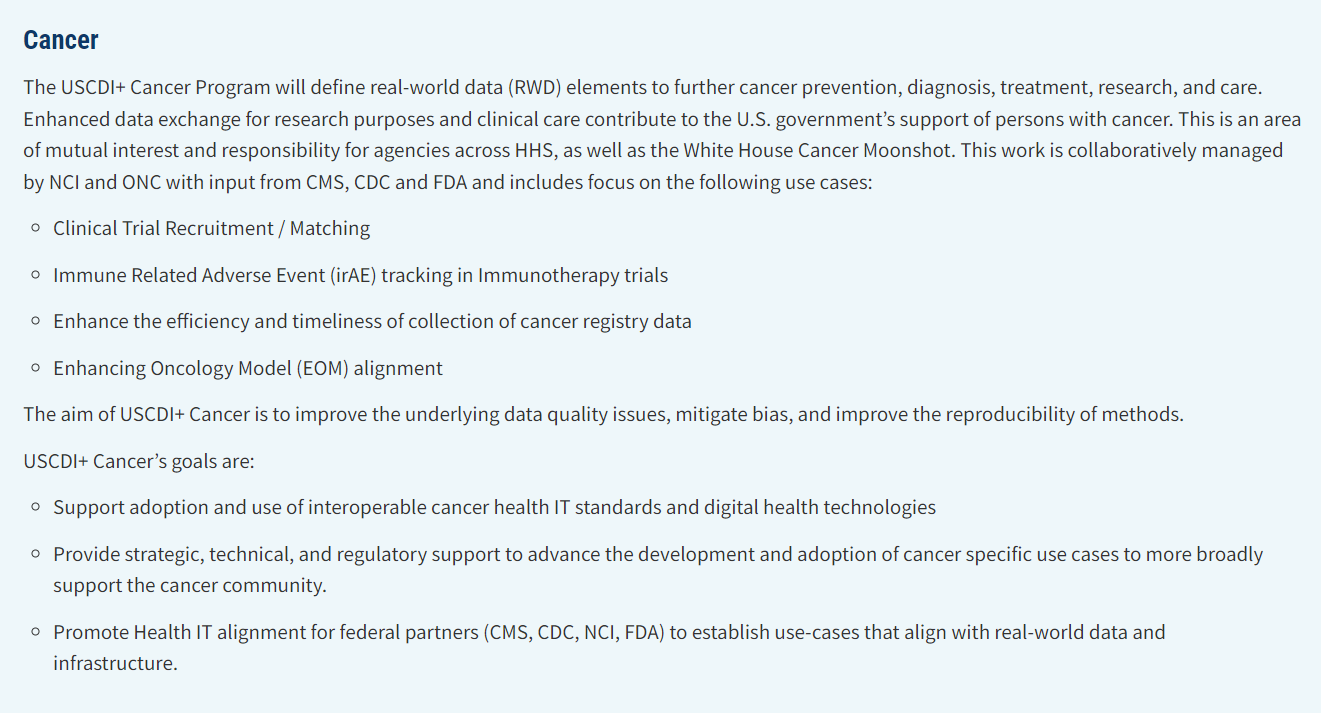In business and politics, it’s not very easy to get competing sides to come to a consensus. There are the rare instances when an idea is so good (or so uncontroversial) that it finds unanimous agreement, like all 100 US senators voting to stop changing our clocks.
In healthcare, providers are protective of their data and electronic health records companies have traditionally focused on interoperability within their own ecosystems. While stakeholders can’t settle on a common set of numbers and nomenclature, there has at least been agreement regarding how data is exchanged, implementing standards like HL7 and FHIR.
Along with these standards for transmission, a group of the largest EHR companies have agreed to implement a common set of minimum data (known as USCDI+ Cancer), including newly added cancer-related data that will support both information exchange and a new CMS payment model. Epic, Oracle, Meditech, athenahealth, Flatiron, Ontada, ThymeCare, and CVS Health all signed on to include these common data elements in their EHR.
These shared patient data fields cover things like the disease status, treatment history, and test results of patients.
USCDI+ Cancer Goals (Source: HealthIT.gov)
Interoperability for cancer patients has been of particular focus since the Obama administration’s “Cancer Moonshot” program began in 2016 to lower costs and improve patient care. Since the program was started, enrollment in clinical trials for adult cancer patients has increased from around six percent up to a quarter. Other use cases include tracking adverse events and the efficiency of cancer registry data.
By adopting standards like this, friction is reduced in mapping incoming data to medical records, data entry staff are working with familiar fields, and cancer patients are better able to have a history of their treatment follow them to their providers.
Finding commonality is important because oncology, like other types of specialized medicine, tends to draw patients from large geographies and coverage situations leading to an abundance of non-interfaced documentation. Documents can arrive via paper, fax, electronic fax, email, or scan with each having a different look and feel.
When we’re further down the road of interoperability, these documents and the data contained within them will seamlessly join a patient’s existing medical record. Until then, Extract’s HealthyData software suite can classify, index, route, and extract data from those documents, automatically.
While these EHR software companies remain in fierce competition, it’s encouraging to see collaboration that will benefit patients. Consensus is difficult to come by, so it’s important to strike while the iron is hot. Even the most agreed upon ideas, like not messing with people’s sleep, can be left by the wayside if they’re not acted on.
Jump on your interoperability journey today; reach out, and we’d be happy to show how we can help your organization.
About the Author: Chris Mack
Chris is a Marketing Manager at Extract with experience in product development, data analysis, and both traditional and digital marketing. Chris received his bachelor’s degree in English from Bucknell University and has an MBA from the University of Notre Dame. A passionate marketer, Chris strives to make complex ideas more accessible to those around him in a compelling way.


